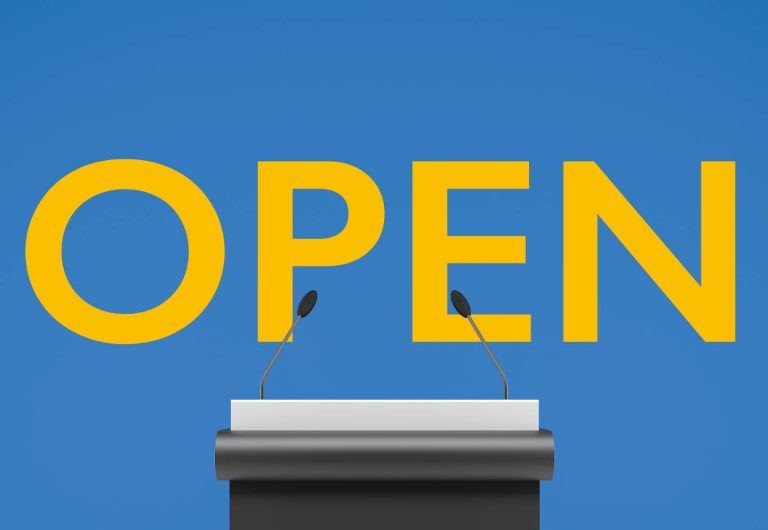Open Government: Where Transparency, Crowdsourcing, and Open Source Software Meet

The past three decades have seen the global spread of a movement combining open data, public consultations, and support for grassroots initiatives under the term «open government.» Of course, calls for government transparency go back decades: for instance, the landmark Freedom of Information Act (FOIA) in the U.S. was signed into law in 1966. But in the open source era, the combination of growing interest in crowdsourcing, data sharing, and basing decisions on data has given the term «open government» new force. And there is a subtle but tight link between open source software and open government.
The article is part of a monthly series on the LPI blog to celebrate the anniversaries of several key open source projects, by exploring different angles and directions of the broad open source movement.
First of all, free software drives many of the innovative ways governments have been engaging with their populations. Governments have always used the media to publicize their actions and policies, but now they are exploiting the new platforms made possible by the Internet for public consultations, polling, soliciting proposals, letting citizens «upvote» proposals, and ultimately letting the public determine new policies through productive, non-partisan debate. Much of the software used for this crowdsourcing is open source. Results of the policy decisions may also lead to open source apps. Examples can be found at The Top 37 Government Open Source Projects.
But the influence of the open source movement on government is deeper, and hard to appreciate unless you were an activist for free software during the 1980s and 1990s. Back then, experts everywhere took it for granted that any useful new ideas had to come from…well, experts. The dominant mode of thought was elitist and individualist. The faceless mob could not be trusted to produce ideas that were better than mostly white, mostly male, mostly affluent people who had spent decades learning their academic discipline.
It was the open source movement that first challenged that paradigm. In combination with other research of the time, such as Eric von Hippel’s astounding research into the role of customers in corporate innovation, the success of projects such as Linux, Wikipedia, and Apache (covered in another article in this series) persuaded governments and businesses that ordinary folks had valuable ideas and could work collaboratively to achieve them. It is fitting that we are celebrating anniversaries for Linux, Wikipedia and Apache this year.
The Next Stage in Open Data Sets
The most common manifestation of the open government movement is to take a step beyond FOIA and release data online. This data is most useful, not when packaged as PDFs or spreadsheets, but posted in a structured format consumable by programs. Open data sets have caught on everywhere from the Philippines to Great Britain. Certainly, this natural step can be transformational. A research project by the investigative group Muckrock suggests how journalists can derive new insights from data sets that other organizations have turned up through FOIA. This kind of research can extend the value of hard-won data.
And this has been a tough year for open data. Some governments have used the pandemic as an excuse to halt the release of data, gambling that open government activists and journalists will be too distracted or disempowered to fight for access.
Data sets have been available long enough for observers to state that the world is ready for a third stage beyond FOIA and beyond APIs. The earlier stages created laws and regulations allowing public access to government data, and setting up mechanisms such as web sites and APIs the facilitate access. The third wave takes conscious steps to make sure the data gets used: «publishing with purpose.» One example is Data Ventures in New Zealand, a site set up by the government to work with potential data users. The goal of the third wave is to foster citizen data science, where non-experts can use data to answer questions in the public interest. Third wave activities include spreading the innovations created by national governments or affluent regions to their colleagues in regions that have less money and technical expertise.
Notable Recent Efforts
The rest of this article lists a few of the diverse open government initiatives worth celebrating. Because there are so many, I have focused on those that go beyond mere information-sharing, as discussed in the previous section. I have also made a special effort to find work in many different countries, and work that took place during this uniquely difficult year of COVID-19.
Many of these projects were initiated by or used the services of The GovLab, a research project at New York University. I work on projects at The GovLab from time to time.
Multicity challenges
In a multicity challenge, residents of five cities in different African countries were brought together for intensive consultations leading to the funding of a dozen projects chosen through a grassroots process. These projects range from promoting resilience in flood zones to supporting small artisans in their search for markets. The impacts also go far beyond the cities. One project, for instance, concerns biomass energy production generated from farm waste, while another grows crops in sea water. Another multicity challenge took place in Mexico.
COVID-19 data
The Organization for Economic Co-operation and Development examined 76 government sites over the past few months to find out how they were using data about COVID-19 to shape policies. Their report showed that responses focused on attacking the immediate effects of the pandemic, which is understandable. They made recommendations for long-term interventions based on data.
In the United States, The Atlantic carried out a huge crowdsourcing effort to collect COVID-19 data that governments maintained in isolated repositories. Large numbers of volunteers consulted sites across the country created the data sets. Results can inform our understanding of racial disparities and other under-researched aspects of the pandemic.
In Brazil, a broader project sponsored by the Linux Professional Institute, Brasil.io, has prepared large amounts of government data for viewing and analysis. The founder of this project was galvanized by the difficulty of getting information about COVID-19, which has hit the country particularly hard.
Many governments have released contact tracing apps, with varying success. One city in the Philippines, Carmona persuaded more than 100,000 people to sign up for their app, called Digital Contact Tracer. Businesses and individuals alike are assigned unique QR codes, and individuals are asked to scan the QR code every time they visit a facility or meet another person.
Response to Zika
Before COVID-19, there was a Zika pandemic. Although it receded enough to be nearly forgotten today, it had heartbreaking effects on families during the mid-2010 decade. In 2017, more than 20 officials from a wide variety of Latin American countries and disciplines met online to discuss ways they could track and prevent Zika infections (PDF in Spanish). Results extended to wider questions of public health in Latin America.
Investigations of Artificial Intelligence in public life
Two cities carried out research into the impact of AI and its ethical implications. Barcelona produced a report from a conventional workshop drawing together experts, but Montreal carried out wider public discussions. Both reports called for accountability and transparency. Montreal focused a bit more on making positive use of AI, especially through education, but also stressed the importance of leaving humans in charge.
Prison mortalities
The MuckRock organization mentioned earlier gleaned data from more than 1,500 public record requests to reveal statistics about deaths among inmates. The article says, «The downloadable data is organized by state and county, and it includes information such as race, cause of death and custody status for each deceased inmate.» The data extends only through 2019, but a similar effort today would probably tell us a lot about the catastrophic impact of COVID-19.
Conclusion
Many of the same principles and goals drive open source software and open government. Efforts by governments to work with their constituents can benefit everyone and cut through the poisonous divisions of ideological hardliners. Finally, open government increasingly takes advantage of expanded Internet access and open source tools to ensure that government actions reflect constituent concerns.
